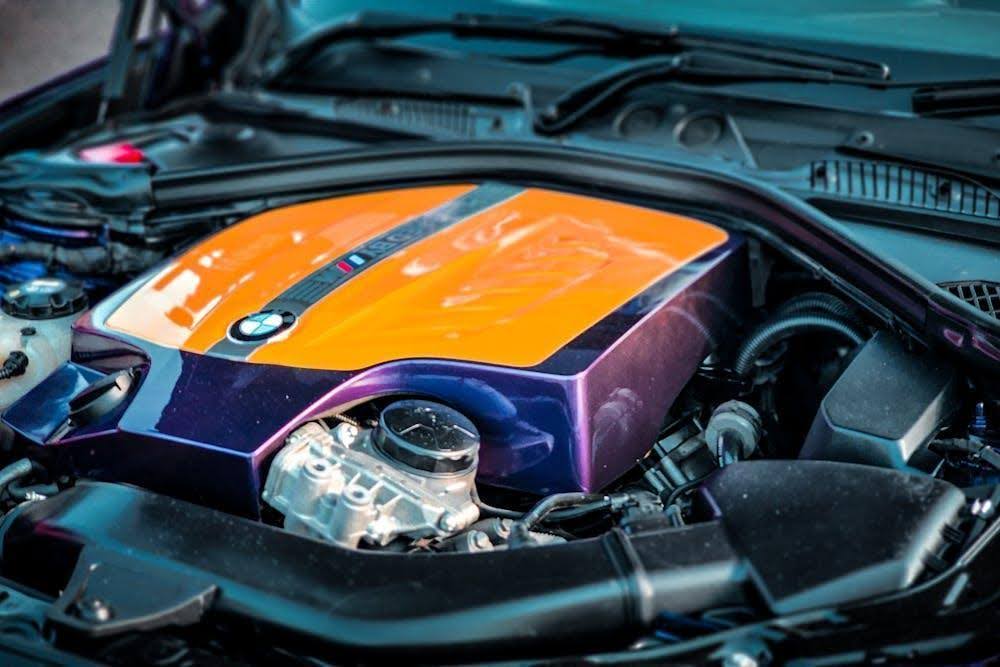Importing car parts into the United States offers a lucrative opportunity for businesses to tap into a thriving automotive market. Whether you’re dealing with engines, tires, or electronic components, understanding the import process is essential for success. This involves navigating a landscape of regulations, tariffs, and customs procedures.
Familiarizing yourself with these key aspects can make the process smoother and help you avoid potential delays or penalties. By ensuring compliance and efficiency, you can successfully bring your auto parts into the U.S. and contribute to the growth of your business.
Market for Car Auto Parts in the United States
The United States boasts a massive automotive market, with over 283 million registered vehicles in the country as of 2022. This vast number of cars, trucks, and motorcycles translates to a significant demand for auto parts, creating a dynamic market for both domestic and international players.
This demand fuels a dynamic automotive products market in the USA, projected to reach US$188.5 billion by the end of 2024. A significant portion of this market relies on imported car parts to meet the diverse needs of consumers and businesses. From replacement parts for everyday vehicles to specialized components for high-performance cars, the import of car parts plays a vital role in supporting this industry’s growth.
Efficiently importing auto parts into the U.S. is vital to support this thriving industry. By ensuring a consistent supply of quality parts, importers play a crucial role in keeping vehicles running smoothly and safely. In turn, this contributes to the overall health of the automotive sector and supports the growth of businesses involved in importing car parts to the USA.
Process & Requirements for Importing Car Parts
Successfully importing car parts into the U.S. requires careful attention to several key factors. These include adhering to import regulations, correctly classifying your parts, understanding duties and taxes, and preparing the necessary shipping documents.
U.S. Auto Parts Import Regulations to Know
1. Environmental Protection Agency (EPA) Regulations
When importing car parts to the USA, it’s essential to be aware of the Environmental Protection Agency (EPA) regulations, particularly for engines and emissions-related components. These parts must comply with EPA standards and the Clean Air Act to ensure they meet environmental protection requirements. This is especially important when importing engines, as they must adhere to stringent emissions standards.
For importing engines, you’ll need to file EPA Form 3520-1 with U.S. Customs and Border Protection (CBP) and declare code “E” on the form. This form serves as a declaration that the engine complies with the EPA’s emission standards.
Newly manufactured or imported engines also require a Certificate of Conformity, which verifies that the engine meets the required standards. This certificate is essential for demonstrating compliance and ensuring a smooth import process.
2. National Highway Traffic Safety Administration (NHTSA) Regulations
In addition to EPA regulations, the National Highway Traffic Safety Administration (NHTSA) sets safety standards for motor vehicles and their components. When importing car parts, particularly those related to safety, it’s crucial to ensure they comply with the Federal Motor Vehicle Safety Standards (FMVSS). This applies to critical components such as airbags, brakes, seat belts, and steering systems.
To demonstrate compliance with NHTSA regulations when importing car parts, proper labeling and certification are required. This helps ensure the safety and roadworthiness of vehicles using imported parts. This includes:
- DOT Symbol: Safety-critical parts must bear the DOT symbol, indicating that they meet the required standards.
- Manufacturer Information: Parts should be labeled with the manufacturer’s name and address.
- Part Number: Each part should have a unique identification number for tracking and compliance purposes.
- Compliance Statement: A statement confirming that the part complies with all applicable FMVSS regulations.
3. Special Requirements for Used or Refurbished Parts
Used or refurbished auto parts can be a cost-effective option, but they often face additional scrutiny when importing car parts into us. The EPA and NHTSA may conduct inspections to ensure these parts meet environmental and safety standards. It’s essential to be prepared for potential inspections and have documentation to prove compliance.
Furthermore, there are restrictions on importing car parts that contain fluids or hazardous materials. These restrictions aim to protect the environment and public health. Relevant regulations include:
- Clean Air Act: Regulates air pollution and sets standards for emissions from vehicles and engines. When importing engines or parts containing fluids, ensure they meet the Clean Air Act requirements to avoid environmental issues.
- Toxic Substances Control Act (TSCA): Regulates the import and use of chemicals in various products, including auto parts. Ensure any fluids or materials in your imported parts comply with TSCA regulations.
- Resource Conservation and Recovery Act (RCRA): Governs the disposal of hazardous waste, including automotive fluids. Ensure you understand the proper handling and disposal of any fluids or hazardous materials contained in the parts you import.
Classifying Autol Parts for Duties & Tariffs
When importing car parts into the U.S., accurate product classification is essential for determining the appropriate duties and tariffs. The Harmonized System (HS) codes are an internationally standardized system of names and numbers for classifying traded products. Correctly identifying the HS code for your auto parts ensures you pay the correct amount of duties and avoids potential customs delays.
Here’s a table with some common car parts and their corresponding HS codes:
| Car Part | HS Code |
| Airbags | 8708.94 |
| Axles | 8708.70 |
| Body panels | 8708.29 |
| Brakes (including parts) | 8708.30 |
| Catalytic converters | 8409 |
| Electrical parts | 8511 |
| Engines | 8407 |
| Filters (oil, air, fuel) | 8421 |
| Gearboxes | 8708.40 |
| Mufflers | 8707.99 |
| Lighting equipment | 8708.70 |
| Radiators | 8708.91 |
| Seat Belts | 8707.21 |
| Steering parts | 8708.99 |
| Suspension systems (including parts) | 8708.80 |
| Tires | 4011 |
Country of Origin (COO) Rules for Importing Car Parts
Country of Origin (COO) rules play a significant role in determining import duties and tariffs for auto parts. These rules establish the country where a product is considered to have originated, even if it has undergone manufacturing or processing in multiple countries. Understanding COO is essential for accurate tariff classification and can impact the overall cost of imported car parts.
For instance, under the United States-Mexico-Canada Agreement (USMCA), auto parts must meet specific regional value content requirements to qualify for preferential tariff treatment. This means a certain percentage of the part’s value must originate from within the USMCA region to benefit from reduced or eliminated tariffs.
Importers can also leverage programs like the Generalized System of Preferences (GSP) to reduce or waive duties on certain auto parts. The GSP provides preferential tariff treatment to eligible products imported from designated developing countries. Understanding and utilizing these programs can significantly impact the cost-effectiveness of importing car parts.
Required Documents for Auto Parts Import
Having the correct documentation is crucial for a smooth import process. Ensure you have the following documents readily available when importing car parts into the U.S.:
- Commercial Invoice: This document provides details about the transaction, including the seller, buyer, product description, quantity, and price.
- Bill of Lading: This document serves as a contract between the shipper and the carrier, outlining the terms of transportation for the imported goods.
- Packing List: This document provides a detailed list of the contents of each package, including the quantity, weight, and dimensions.
- Entry Summary (CBP Form 7501): This form is used to declare the imported goods to U.S. Customs and Border Protection (CBP) and provide necessary information for customs clearance.
- EPA Form 3520-1 (for engines): As mentioned earlier, this form is required for importing engines and declares compliance with EPA emission standards.
- NHTSA HS-7 Form (for safety-related parts): This form is required for importing car parts that affect a vehicle’s safety features and declares compliance with NHTSA safety standards.
- Certificate of Origin: This document certifies the origin of the imported goods and is necessary for determining eligibility for preferential tariff programs like the USMCA or GSP.
Shipping & Logistics for Auto Parts Import
1. Shipping Methods
When importing car parts, choosing the right shipping method is crucial for ensuring timely and cost-effective delivery. For bulk shipments of smaller parts, consider using Full Container Load (FCL) or Less than Container Load (LCL) options. FCL provides exclusive use of a container, offering better security and control over your shipment. LCL allows you to share container space with other importers, making it a cost-effective choice for smaller volumes.
For larger automotive components like engines or chassis, Roll-On/Roll-Off (RoRo) vessels are a specialized and efficient option. These vessels are designed to carry wheeled cargo, allowing for easy loading and unloading of large auto parts. RoRo transport minimizes the risk of damage during handling and is often preferred for oversized or heavy components.
While ocean freight is generally the most cost-effective method for importing car parts, it’s important to be aware of the Importer Security Filing (ISF) requirement. If your goods are arriving by ocean vessel, you’ll need to file an ISF with U.S. Customs and Border Protection (CBP) at least 24 hours before the ship departs for the U.S. This provides customs with advance information about your shipment and is mandatory for all ocean imports.
For urgent shipments where faster delivery is essential, air freight might be a more suitable option, though it typically comes with a higher cost. Ultimately, the best choice depends on your specific needs and priorities, balancing speed and cost-effectiveness.
2. Incoterms
Incoterms (International Commercial Terms) are a set of standardized trade terms that define the responsibilities of buyers and sellers in international trade transactions. Understanding Incoterms is crucial when importing car parts as they clarify who is responsible for various aspects of the shipment, such as transportation costs, insurance, and risk.
Here are some commonly used Incoterms in auto parts imports:
- FOB (Free on Board): Under FOB terms, the seller’s responsibility ends when the goods are loaded onto the shipping vessel at the port of origin. The buyer assumes responsibility for the goods from that point onward, including transportation costs, insurance, and risk.
- CIF (Cost, Insurance, Freight): With CIF terms, the seller is responsible for the cost of the goods, insurance, and freight until the goods reach the U.S. port of entry. The buyer then takes responsibility for customs clearance and onward delivery.
- EXW (Ex Works): EXW represents the minimum obligation for the seller. The seller makes the goods available at their premises, and the buyer is responsible for all aspects of transportation, including loading the goods, export clearance, and import clearance.
- DAP (Delivered at Place): Under DAP terms, the seller is responsible for delivering the goods to a specified place, usually the buyer’s premises. The seller bears all costs and risks associated with transportation until the goods reach the agreed-upon destination.
3. Insurance
Given the value of car parts, especially engines and specialized components, obtaining freight insurance is highly recommended. Freight insurance protects your investment by covering potential losses or damages during transit. This safeguards your business from financial setbacks due to unforeseen circumstances like accidents, theft, or natural disasters.
Ensure Smooth Auto Parts Import with CrimsonLogic

Successfully importing car parts into the U.S. involves understanding and complying with various regulations and procedures. From engines to tires, each part has specific requirements that must be met to ensure a smooth and compliant import process.
Compliance with EPA and NHTSA regulations is essential, especially for engines and safety-related components. Correctly classifying your auto parts using HS codes is crucial for determining accurate duties and tariffs. Additionally, having the necessary documentation, including commercial invoices, bills of lading, and entry summaries, is vital for customs clearance.
CrimsonLogic can help simplify this process for your business. Our expertise in trade facilitation and customs compliance can streamline your auto parts imports, ensuring adherence to regulations and efficient customs clearance. Our Automated Commercial Environment (ACE) services, such as our ACE Ocean filing software, provide a secure and reliable platform for submitting electronic import documents to U.S. Customs and Border Protection (CBP), facilitating a seamless and efficient import experience.





